- Home
- Buddha
- About Us
- Thrangu
- Nun Temple
- Princess Wencheng Temple
- News
- Teachings
- Tibetan
- Foundation
- Sharing
- Offering
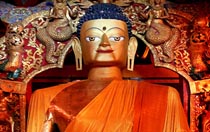
The Karma Kagyu lineage
2018-10-15
The Karma Kagyu lineage of Tibetan Buddhism traces its origins to Shakyamuni Buddha through Marpa the Great Translator,
Details
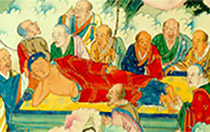
Shakyamuni Buddha(8)Final Days and Relics
2018-09-29
Up until the very last moments of his life, the Buddha continued to teach and to care tenderly for all those around him.
Details
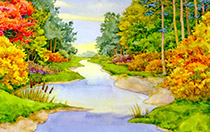
Shakyamuni Buddha(7)Subduing Opponents and Display of Miracles
2018-09-29
As he wended his way from town to village, from palace to roadside, sowing widely
Details
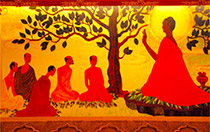
Shakyamuni Buddha(6)Turning the Wheel of Dharma
2018-09-29
Having discovered the path of liberation from cyclic existence, or “saṃsāra,” the Buddha now understood the path of liberation for all,
Details
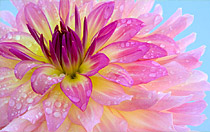
shakyamuni Buddha(5)Enlightenment
2018-09-29
After accepting an offering of a golden bowl of yogurt with honey from a young woman named Sujātā,
Details
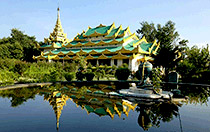
Shakyamuni Buddha(4)The Practice of Austerities
2018-09-29
At this point in time, a tradition of meditative practice was already flourishing in northern India,
Details
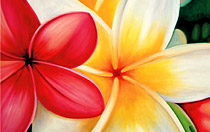
Shakyamuni Buddha(3)Walking Away from Pleasures
2018-09-29
Driven by curiosity about life outside the palace walls, Siddhārtha seized the opportunities he found to slip away to explore the city.
Details

Shakyamuni Buddha(2)Display of Prowess and Marriage
2018-09-28
Shakyamuni Buddha Display of Prowess and Marriage As a result of this prediction, the young prince’s father took pains to ensure the future of his
Details
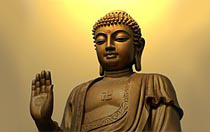
Shakyamuni Buddha(1)Birth and Early Signs of Greatness
2018-09-28
The Buddha-to-be took his final birth as the prince Siddhārtha Gautama,
Details

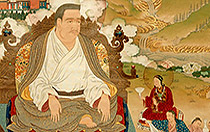
Marpa Lotsāwa
2018-10-16
Marpa Lotsāwa (1012-1097) Marpa Chökyi Lodrö was born in the early 11th century in Lhodrak, to a prosperous family with its own fields to farm and pasture to graze cattle.
Details
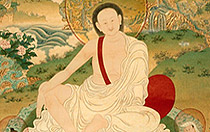
Milarepa
2018-10-17
Marpa’s chief disciple, Milarepa, remains Tibet’s most widely venerated spiritual master,
Details
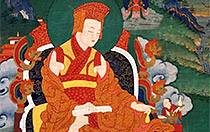
Gampopa
2018-10-17
(1079-1153) Milarepa had two main heart disciples: Gampopa, also known as Dagpo Rinpoche, and Rechungpa. Together the two are described as the sun and the moon,
Details
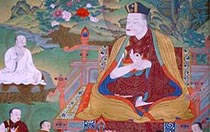
The First Karmapa
2018-10-18
The First Karmapa, Dusum Khyenpa (1110-1193)Dusum Khyenpa was born in eastern Tibet in the year 1110 CE, to a mother named Lhathok Zagang Jam and a father named Gompa Dorje Gönpo.
Details
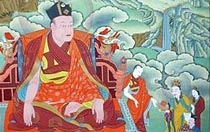
The Second Karmapa
2018-10-21
Dusum Khyenpa returned as Karma Pakshi, as he had predicted in the letter he left with his heart disciple, Drogön Rechen (1148-1218).
Details
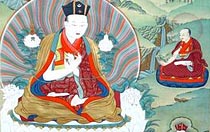
The Third Karmapa
2018-10-21
The Third Karmapa, Rangjung Dorje (1284-1339) The Dharma is said to have two forms, the verbal form found in texts, and the realizations that arise in the minds of beings.
Details
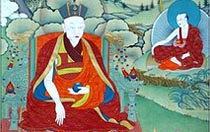
The Fourth Karmapa
2018-10-23
The Fourth Karmapa, Rolpe Dorje(1340-1383) The activities of the Fourth Karmapa left lasting marks not only in the spiritual realm, but also in terms of Tibetan culture and history.
Details
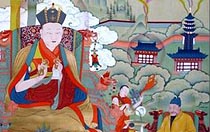
The Fifth Karmapa
2018-10-23
The Fifth Karmapa, Deshin Shegpa(1384-1415) When the Fifth Karmapa was in his early 20s, he accepted an invitation from the ruler of Ming-dynasty China,
Details
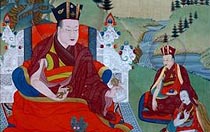
The Sixth Karmapa
2018-10-23
The Sixth Karmapa, Tongwa Dönden, was the first Karmapa in two centuries to decline the Chinese emperor’s invitation to teach at his court.
Details

The Karma Kagyu lineage
2018-10-15
The Karma Kagyu lineage of Tibetan Buddhism traces its origins to Shakyamuni Buddha through Marpa the Great Translator,
Details
Shakyamuni Buddha(8)Final Days and Relics
2018-09-29
Up until the very last moments of his life, the Buddha continued to teach and to care tenderly for all those around him.
Details
Shakyamuni Buddha(7)Subduing Opponents and Display of Miracles
2018-09-29
As he wended his way from town to village, from palace to roadside, sowing widely
Details
Shakyamuni Buddha(6)Turning the Wheel of Dharma
2018-09-29
Having discovered the path of liberation from cyclic existence, or “saṃsāra,” the Buddha now understood the path of liberation for all,
Details
shakyamuni Buddha(5)Enlightenment
2018-09-29
After accepting an offering of a golden bowl of yogurt with honey from a young woman named Sujātā,
Details
Shakyamuni Buddha(4)The Practice of Austerities
2018-09-29
At this point in time, a tradition of meditative practice was already flourishing in northern India,
Details
Shakyamuni Buddha(3)Walking Away from Pleasures
2018-09-29
Driven by curiosity about life outside the palace walls, Siddhārtha seized the opportunities he found to slip away to explore the city.
Details
Shakyamuni Buddha(2)Display of Prowess and Marriage
2018-09-28
Shakyamuni Buddha Display of Prowess and Marriage As a result of this prediction, the young prince’s father took pains to ensure the future of his
Details
Shakyamuni Buddha(1)Birth and Early Signs of Greatness
2018-09-28
The Buddha-to-be took his final birth as the prince Siddhārtha Gautama,
Details
Marpa Lotsāwa
2018-10-16
Marpa Lotsāwa (1012-1097) Marpa Chökyi Lodrö was born in the early 11th century in Lhodrak, to a prosperous family with its own fields to farm and pasture to graze cattle.
Details
Milarepa
2018-10-17
Marpa’s chief disciple, Milarepa, remains Tibet’s most widely venerated spiritual master,
Details
Gampopa
2018-10-17
(1079-1153) Milarepa had two main heart disciples: Gampopa, also known as Dagpo Rinpoche, and Rechungpa. Together the two are described as the sun and the moon,
Details
The First Karmapa
2018-10-18
The First Karmapa, Dusum Khyenpa (1110-1193)Dusum Khyenpa was born in eastern Tibet in the year 1110 CE, to a mother named Lhathok Zagang Jam and a father named Gompa Dorje Gönpo.
Details
The Second Karmapa
2018-10-21
Dusum Khyenpa returned as Karma Pakshi, as he had predicted in the letter he left with his heart disciple, Drogön Rechen (1148-1218).
Details
The Third Karmapa
2018-10-21
The Third Karmapa, Rangjung Dorje (1284-1339) The Dharma is said to have two forms, the verbal form found in texts, and the realizations that arise in the minds of beings.
Details
The Fourth Karmapa
2018-10-23
The Fourth Karmapa, Rolpe Dorje(1340-1383) The activities of the Fourth Karmapa left lasting marks not only in the spiritual realm, but also in terms of Tibetan culture and history.
Details
The Fifth Karmapa
2018-10-23
The Fifth Karmapa, Deshin Shegpa(1384-1415) When the Fifth Karmapa was in his early 20s, he accepted an invitation from the ruler of Ming-dynasty China,
Details
The Sixth Karmapa
2018-10-23
The Sixth Karmapa, Tongwa Dönden, was the first Karmapa in two centuries to decline the Chinese emperor’s invitation to teach at his court.
Details